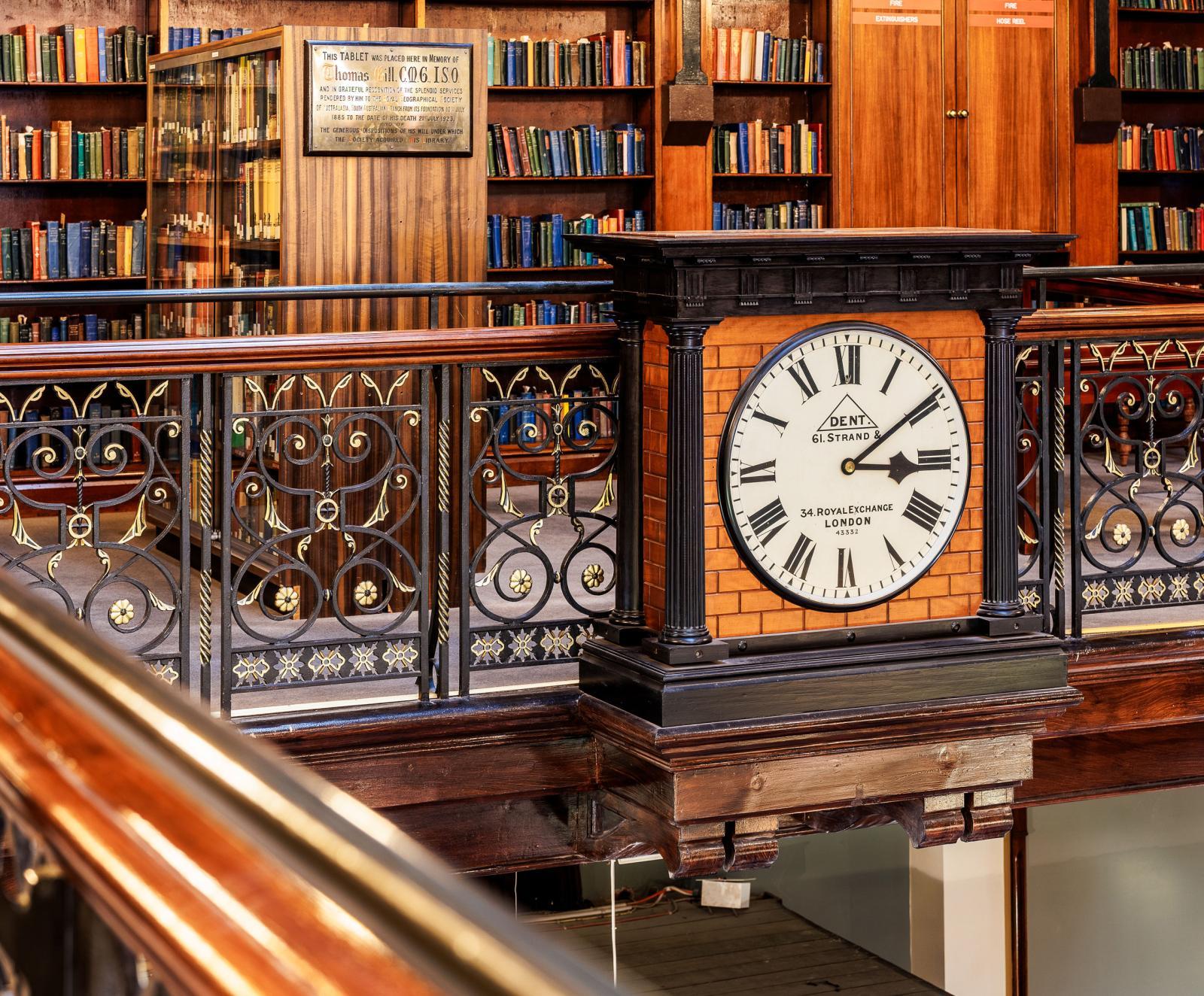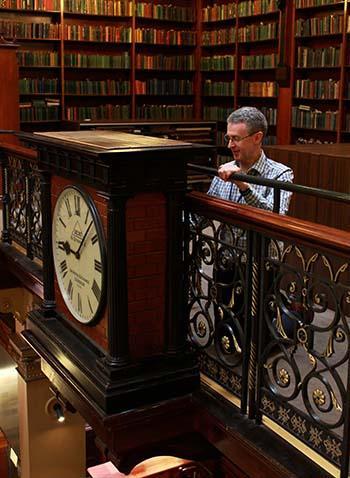-
What's On
- Events
- Exhibitions
- Tours
-
Kids and families
- Australian Rules Football in books
- Board games from the past
- Bugs and Insects
- Build a bug
- Create Futuristic Fashion that is Out of this world!
- Create your Ultimate Party Menu
- Design your Dream Holden
- Make your (book) mark at home
- Millie Mak the Maker
- Out on the Town with Keifee the Koala
- What's in Pig's Suitcase?
- Students and teachers
- Collections
- Research
- Stories
- Visit us
- About Us
- Get involved

The Mortlock clock
One of the many special treasures inside the Mortlock Chamber.
Step inside the Mortlock Chamber at the State Library of South Australia and you’ll be surrounded by history.
Once home to a museum, an art gallery, and a public library, today the Chamber is a much-loved exhibition space, with study and research areas tucked away on the second floor. Above that, the third floor is home to the Royal Geographical Society of SA’s library and the Josiah Symonds Library.
But among the books, displays, and grand Victorian architecture, there’s a quieter presence that has been part of the Chamber’s life for more than 130 years, a clock.
The South Australian Chronicle reported on 25 June 1887:
There has just been erected in the Museum, North-terrace, a large and handsome clock, the workmanship of Messrs. E. Dent and Co., of London. The order for the clock was given by Mr C. Todd, C.M.G., Postmaster-General, during his recent visit to London ... The makers ... state that they were actually out of pocket by the transaction, but they wished to turn out the work in a really creditable manner.
Crafted in 1886 by Dent & Co. of London, known for the clock in the Elizabeth Tower in London, this elegant timepiece hangs from the second-level balustrade. Its ebony and wood frame holds a dial 63cm across, and though modest in size, it carries a weight of tradition. Unlike the digital clocks that mark time silently in the modern world, this one must be wound by hand each week to keep it ticking.
A timely ritual
That ritual—unlocking the gate, fitting the key, and turning the mechanism—is part of the Chamber’s rhythm.
From librarians and archivists of the past to staff today, winding the clock has become a small but meaningful act of care. Sometimes the hands need adjusting, whether to correct its timing or to mark the shift in daylight savings. On occasion, the back is opened to reveal its compact mechanism, only 18cm square, and the pendulum, just 43cm long, quietly swinging away.

This simple task connects generations. Each tick and tock add to the Chamber’s atmosphere, reminding us that history isn’t only in books or exhibitions, it’s alive in the traditions we keep. One day, the responsibility of winding the Mortlock clock will be handed on again, ensuring it continues to mark the passage of time for the next generation of library visitors.
Revised version of a news article published in 2019: The ticking of the Mortlock clock